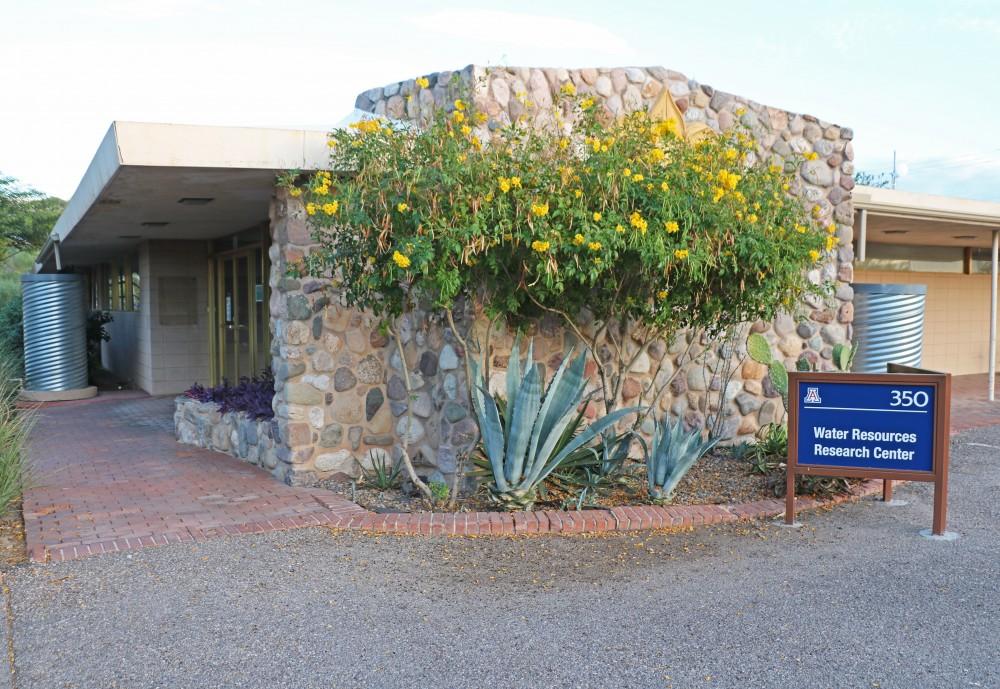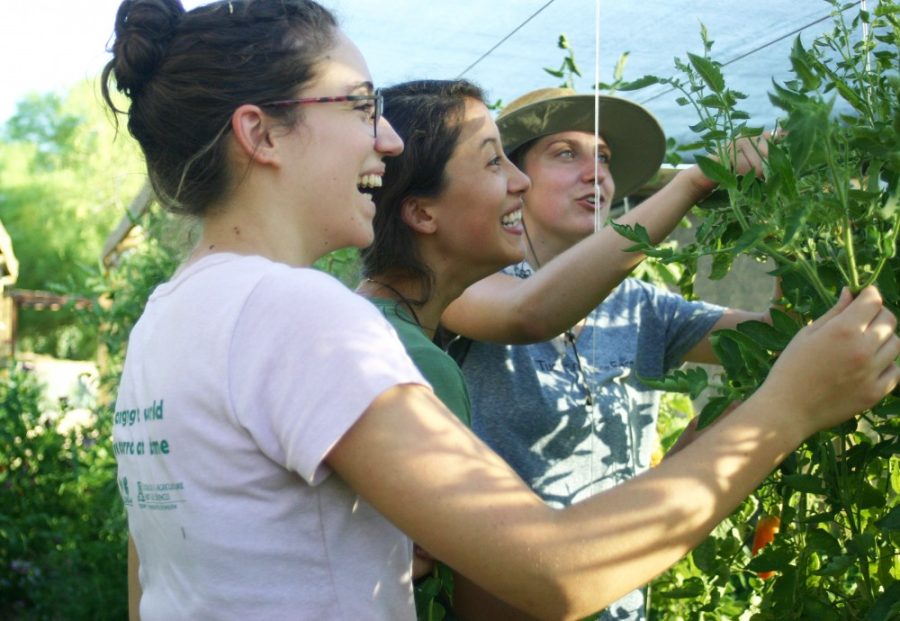Sustainability, or the capability to support a population, is a hot topic right now, and for good reason. With rapidly expanding urban areas and fluctuating climate patterns, scientists are striving to develop a blueprint for a sustainable future. But what does sustainability look like in real life?
The College of Agriculture and Life Sciences at the University of Arizona is answering that question by bringing concepts taught in the classroom to the community, applying scientific research to real-world problems.
“We’re all in this together, in terms of how do we sustain a population over time in the desert, with limited resources, in a practical way,” said Jeffrey Silvertooth, associate dean of cooperative extension and economic development in CALS and a professor of soil, water, plant and environmental science.
As a land grant university, the UA is charged with making education available to the public, specifically in the areas of agriculture, science and technology, according to Silvertooth.
The College of Agriculture and Life Sciences bears the brunt of this responsibility by focusing on instruction in the classroom, basic and applied scientific research and extension education, Silvertooth said.
RELATED: ‘Marriage’ of ideas: Husband and wife team-up to combat opioid epidemic
CALS fulfills the mission of extension education through its cooperative extension program, which feeds every county in Arizona scientific research, training and technical advice directly from the university.
“We don’t just go out and tell people ‘here’s what we do, listen to us because we’re from the university and we’re so smart,’” Silvertooth said. “We take those technologies out and work with people in the communities; quite often they’re helping us learn. We learn together by working together.”
But when it comes down to actually getting that information to every county in Arizona, the formula is not as simple. One issue at the core of sustaining any population is the state’s most valuable resource: water.
“We have to engage in good water management so that we have the water supplies to support our existing economy and people and what’s expected to be growing demands over time,” said Sharon Megdal, director of the Water Resources Research Center and a distinguished outreach professor.
The Water Resources Research Center, housed within CALS, also focuses on community outreach and education, specifically focusing on water issues in the local and state regions.
“It’s front and center now for us to be doing as good a job as we can, managing our water resources … so that we have a vibrant, healthy economy and environment going forward,” Megdal said.
For example, researchers within CALS have developed a way to accurately measure exactly how much water a crop will need during its growing season, Silvertooth said. This level of accuracy cuts back on water waste while still fueling the plant with adequate water.
Agriculture is one of Arizona’s primary water uses, accounting for nearly three-quarters of the state’s water use. That may seem counter-intuitive, considering Arizona is located in the middle of a dry desert. However, in 2012 there were over 41,000 square miles of farmland in Arizona, according to the United States Department of Agriculture census.
“The growing conditions are very good for crops in Arizona,” Megdal said. “About 90 percent of the leafy vegetables consumed in the United States between November and March come from the Yuma area, so we’re feeding the population here.”
Aside from vegetable crops, much of Arizona is covered in acres of dairies, forage crops and cattle range. According to Silvertooth, though these industries use a lot of water, they also produce a lot in terms of sustaining the state’s population of nearly 7 million people.
“It’s not just a matter of exploitation of land and water resources, but those resources are going to produce crops that are producing cattle, [which] are producing milk and dairy products that are consumed almost exclusively in the state of Arizona,” Silvertooth said.
As these industries continue to grow, they turn to the UA for scientific research and technologies that can be used to improve their production.
“The farmers we work with in the state through the cooperative extension program are already experts in their field, so we mainly focus on refining and cultivating the technologies we’ve developed in the lab and putting them to work in real-world situations,” Silvertooth said.
These large-scale agricultural businesses aren’t just looking for advice from the university; they’re looking for qualified future employees, too. Students on campus can help make Arizona’s agricultural industries sustainable, according to Silvertooth, by participating in internships, research assistant positions, summer jobs and work study programs.

The CALS cooperative extension program offers internships in every county in the state, Silvertooth said. Students can also take a more grassroots approach by utilizing some of the WRRC’s online resources to share sustainability messages via social media.
Students can go to beyondthemirage.org to watch a documentary on the future of water resources, then create and share their own mini-documentaries using some of the short video clips provided on the website, Megdal said.
While these may seem like small efforts, each step toward sustainability is a step in the right direction. With the help of thousands of dedicated students and faculty, the College of Agriculture and Life Sciences is working toward building a more sustainable future every day.
“If you’re interested in taking science and making it work in the real world, and you’re interested in sustainability, come work with us,” Silvertooth said.
Follow Hannah Dahl on Twitter









